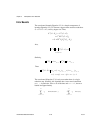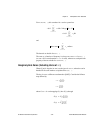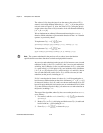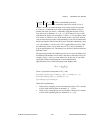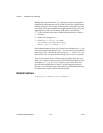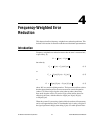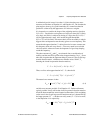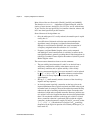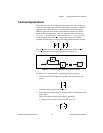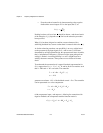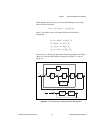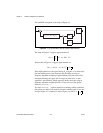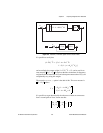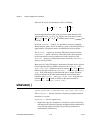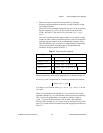
Chapter 4 Frequency-Weighted Error Reduction
Xmath Model Reduction Module 4-4 ni.com
Most of these ideas are discussed in [Enn84], [AnL89], and [AnM89].
The function
wtbalance( ) implements weighted reduction, with five
choices of error measure, namely E
IS
, E
OS
, E
M
, E
MS
, and E
1
with arbitrary
V(jω). The first four are specifically for controller reduction, whereas the
last is not aimed specifically at this situation.
Several features of the algorithms are:
• Only the stable part of C is really reduced; the unstable part is copied
exactly into C
r
.
• A modification of balanced realization truncation underpins the
algorithms, namely (frequency) weighted balanced truncation,
although to avoid numerical problems, the actual construction of
a frequency weighted balanced realization of C is avoided.
• Frequency weighted Hankel singular values can be computed,
and although no error bound formula is available (in contrast to the
unweighted problem), generally speaking there is little damage done in
reducing by a number of states equal to the number of (relatively) small
Hankel singular values.
The error measures themselves deserve certain comments:
• The two stability based measures E
IS
and E
OS
are derived from a
sufficiency condition for stability, rather than a necessity and
sufficiency condition, and so capture stability a little crudely.
• For any constant nonsingular N, the error measure E
IS
can be replaced
by and the robustness result remains
valid. Use of an N may improve or worsen the quality of the
approximation.
•Having T – T
r
small normally ensures closeness of the closed-loop
impulse and step responses.
• In classical control especially, constraints on the loop gain can be
imposed (Minimum value of gain in one band, maximum value of gain
in another band, for example). None of the methods presented directly
addresses the task of retaining satisfaction of these constraints after
reduction of a high order acceptable controller. However, judicious use
of a weight V can assist. Suppose that above the closed-loop bandwidth
there is an overbound constraint on the loop gain, which is violated
when a controller reduction is performed (but not with the original
controller). At these frequencies, roughly PC and PC
r
are small, so that
. Introduction of a weight V in E
MS
penalizing
frequencies in the region in question will evidently encourage PC
r
to
better track PC.
NC C
r
–()PI CP+()
1–
N
1–
∞
TT
r
– PC C
r
–()=



